
What is Innovation?
Innovation brings new ideas, methods, products, services, or solutions that have a significant positive impact and value. It involves transforming creative concepts into tangible outcomes that improve efficiency and effectiveness or address unmet needs.
Let us analyze the present challenging situations.

The “Candle Problem” is a test of creative problem-solving developed by psychologist Karl Duncker in 1945. The test challenges “functional fixedness”, a cognitive bias that makes it difficult to use familiar objects in abnormal ways.
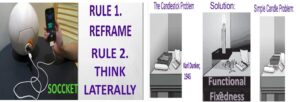
Think!!
Is our future bleak?
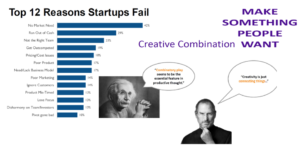
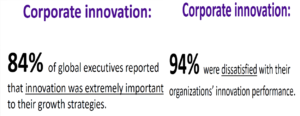

We need to modify our thinking methods with an innovative mind, to resolve our problems.


8 Characteristics of an innovative mind
Our course of action defines innovation as a “way of thinking that creates something new and better.” This idea is repeated, and reflecting on creating something that accomplishes these specificities is essential. Changing just for the sake of novelty can have negative consequences, and we must be conscious when we search for innovation.
The next big idea that our action dives into is using the “growth mindset,” which encourages people to develop abilities, intelligence, and talents. This is directly related to developing the ability to innovate in education, and our actions define innovation.

Change is inevitable, in state-of-art for innovation.

Changing just for the sake of novelty will be the futile, whist, innovative change that creates something new is always better.”
Developing a competency with an open-minded attitude or “Growth Mindset will create and sustain anew.
Give Me Five” – Towards Innovator’s Mindset

- Delve into your own “Fixed Mindset” and understand your shortcomings.
- Reflect on self by accepting criticism with graceful receptiveness.
- Self-motivate intrinsically and extrinsically to come out of your vicious circle.
- Focus, plan, and work towards converting all possible threats into opportunities.
- Establish “Change matters”, by evincing your success.
GOLDEN 8 WAYS TO DEVELOP Innovator’s Mindset

- Expand your horizons with neuroplasticity. “Neurons that fire together- wire together.”
- Every time we think or act, the neurons send signals.
- These signals are responsible for every step you take. Your heartbeat, thoughts, action and emotion. (positive/negative).
- Repetition and recurrence of this pathway in the brain arbitrate our thought process.
- Configure your internal engineering network to achieve the best by developing more positive signals, connections and strengthening wires.
- Seed in positivity to reap positive vibes.
- Embrace the “Trinity of Trait Cluster” by igniting your curiosity!
- Curiosity combines intelligence, persistence, and hunger for novelty, all wrapped up in one.
- Curious people keep moving forward, opening new doors, to welcome anew.
- Curious thinkers are best positioned to thrive today and, in the future, will be a proactive hybrid in this highly competitive world.
- Their curiosity will lead them down new paths to embrace “Change” with various eclectic perspectives and collaborate with those specializations.
- Engage in constant learning to lead from “unknown to known.”
- Lifelong learning creates a positive attitude towards life, learning and earning. Our capacity to earn is directly related to our willingness to learn. It is a deliberate and voluntary act.
- Lifelong learners are motivated to learn to earn a quality of life and be sustainable with the “Change”.
- Endow your plan with indomitable spirit and Grit.
- Winners never quit, and quitters never win. This axiom may seem trite, but just because it’s been used a lot. Whether you call it determination or grit, the will to keep going is vital to success.
- The very nature of being determined enhances the goal’s value and intensifies our motivation.
- Motivation leads us to wonderful findings and broadens our knowledge about ourselves and our goals. With determination, failure is just a diversion. It is just a detour to success.
- Envisage every moment of life as learning -“Success or Failure”.
- It’s a societal norm to treat people with admiration who fulfil all the “requisites” for success.
- In this world of intense competition, achieving success is perhaps the only major parameter that defines a person.
- “Success” is defined as achievement, and “Failure” is defined as a defect.
- But both are learning experiences that recline the next steps forward.
- Eulogize Life moments and people with much excitement – “In Gratitude”.
- Appreciation for the little things can lead to big results in happiness. One way to practice this is through “Being in Gratitude”. Connect and nurture relations with a sense of thankfulness, cherishing pivotal moments as life milestones.
- Whenever we feel discouraged that we aren’t reaching our goals and aspirations, remember that we can still find accomplishment and joy in the moment of being thankful. “Life is like a camera; capture every moment with the joyful smile of contentment”.
- Create the Environmental Plan
- As leaders and innovators, we need to create a community and culture that encourages innovation, built on the nitty-gritty of
- “Building Relations, Connections, Confidence protected by Care, Love, Trust and Trust Thankfulness.
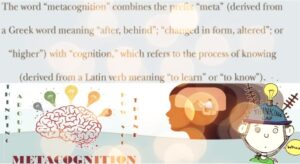
- EXECUTE & EVOLVE
- “Plan-Process-Progress-Product” – By adopting the Metacognition theory.
- How can these lifeways benefit a “Student Learner” in a learning environment and experience?
Thinking about one’s thinking.
- “Metacognition” refers to awareness of one’s own knowledge—what one does and does not know—and one’s ability to understand, control, and manipulate one’s cognitive processes.
- Metacognition is one’s ability to use prior knowledge to plan a strategy for approaching a learning task, take necessary steps to problem solve, reflect on and evaluate results, and modify one’s approach as needed.
Why Teach Metacognitive Skills to our learners?
- Research shows that students can use metacognitive skills to improve their learning.
- It helps learners choose the right cognitive tool for the task and is critical to successful self-directed learning. It includes knowing when and where to use strategies for learning and problem-solving and how and why to use specific strategies.
- As students become more skilled at using metacognitive strategies, they gain confidence and become more independent as learners. Metacognition plays a critical role in successful learning, it is imperative that instructors help learners develop metacognitively.

The ‘learning’ aim, using Metacognition theory, will get students to learn the skills of teaching themselves with the aim of self-regulated learning. The goal of teaching metacognitive strategies is to help learners become comfortable with these strategies so that they employ them automatically to learning tasks, focusing their attention, deriving meaning, and adjusting if something goes wrong.
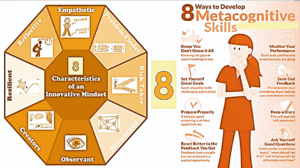
So, innovation is not about a skill set: it’s about a mindset.
- To conclude, for educators to embody this, leaders must create a culture where these characteristics are accepted and encouraged. It is also imperative that these characteristics are embodied at both the leadership and whole organization level.
- To many, being “innovative” is no more than a buzzword, but if we truly have innovative students, we need to embody the “Innovator’s Mindset” at all level.
Mantra of a innovator’s mindset person
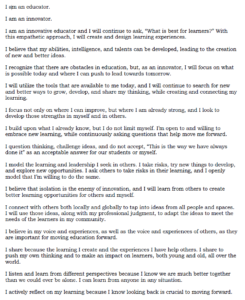
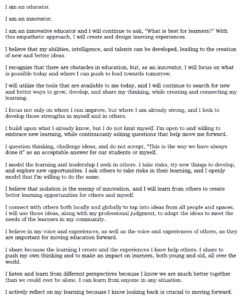
“Metacognitive skills guided in Self-Directed Learning assures long-lasting success.”
In Education:
- Learners who demonstrate a wide variety of metacognitive skills
- perform better on exams and
- complete work more efficiently
- use the right tool for the job,
- modify learning strategies as needed,
- identifying blocks to learning and
- change tools or strategies to ensure goal attainment.
In Life:
Individuals with well-developed metacognitive skills
- can think through a problem or approach a learning task,
- select appropriate strategies, and
- make decisions about a course of action to resolve the problem or
- successfully perform the task.







